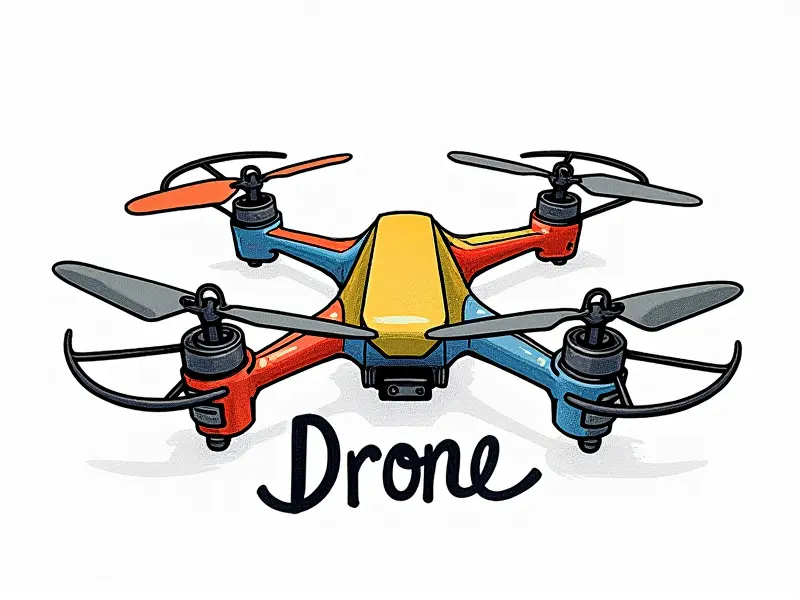Best frame materials for racing?

The Best Frame Materials for Racing Drones
Choosing the right frame material is crucial when it comes to optimizing your racing drone's performance. The material you select can significantly impact factors such as flight stability, speed, maneuverability, and durability. This article delves into the best materials for FPV (First Person View) racing drones, providing a comprehensive comparison of their pros and cons.
Impact of Material on Flight Performance
The material used in your drone frame can greatly influence its flight performance. Factors such as weight, rigidity, and thermal properties all play a role in how well the drone handles during races. For instance, a lighter material allows for quicker acceleration and higher speeds, while stiffer materials provide better stability and responsiveness.
Racing Drone Frame Comparison
When comparing different frame materials, it's essential to consider several aspects including weight distribution, aerodynamics, and structural integrity. Each type of material offers unique advantages that cater to specific racing needs:
- Carbon Fiber: Known for its high strength-to-weight ratio.
- Titanium: Offers exceptional durability but at a higher cost.
- Aramid Fibers (Kevlar): Provides excellent impact resistance and flexibility.
- Fiberglass: A more affordable option with decent rigidity.
- Plastic (ABS, PLA): Great for beginners due to its low cost and ease of repair.
Lightweight vs. Durability in Frames
The age-old debate between lightweight materials and durable ones is a common consideration among drone enthusiasts. Lightweight frames generally offer superior speed and agility, making them ideal for competitive racing environments where quick reflexes are key. However, these materials often come at the expense of durability.
Pros & Cons of Common Frame Materials
Carbon Fiber:
- Pros: High strength-to-weight ratio, excellent rigidity and stability.
- Cons: Expensive, prone to cracking if not handled carefully.
Titanium:
- Pros: Extremely durable, resistant to corrosion.
- Cons: Heavy and costly compared to other materials.
Aramid Fibers (Kevlar):
- Pros: High impact resistance, flexible yet strong.
- Cons: May not be as rigid as carbon fiber or titanium.
Fiberglass:
- Pros: Affordable and easy to work with.
- Cons: Less stiff compared to carbon fiber, may flex more under stress.
Plastic (ABS, PLA):
- Pros: Low cost, easy to repair and replace parts.
- Cons: Not as durable or rigid as other materials.
Longevity of Different Racing Drone Frames
The longevity of your racing drone frame depends on the material's ability to withstand repeated impacts, stress, and environmental factors. Materials like carbon fiber and titanium are known for their resilience over time, whereas plastics may degrade faster with frequent use.
Top 5 Frame Materials for Speed Racers
Based on performance metrics such as speed, maneuverability, and durability, here are the top five frame materials favored by FPV racing enthusiasts:
- Carbon Fiber:
- Titanium:
- Aramid Fibers (Kevlar):
- Fiberglass:
- Plastic (ABS, PLA):
Impact Resistance in Racing Drone Frames
The ability of a frame to withstand impacts is crucial for maintaining performance and longevity. Materials like Kevlar and carbon fiber offer superior impact resistance compared to plastics or fiberglass.
Budget vs. Performance in Frame Choices
Choosing the right material often involves balancing budget constraints with desired performance levels. While higher-end materials such as titanium and carbon fiber provide unmatched durability and speed, they come at a premium price point.
How Material Affects Durability in Racing
The choice of frame material directly impacts how well your drone will hold up under racing conditions. Durable materials like titanium or Kevlar can withstand repeated crashes and high-stress situations better than less robust options such as plastic or fiberglass.
Lightweight vs. Durable: The Trade-off
The decision between lightweight and durable frames often comes down to the specific needs of your racing environment. Lightweight materials offer speed and agility but may sacrifice durability, while heavier materials provide better protection against impacts at the cost of reduced performance.
Conclusion
Selecting the right frame material for your FPV racing drone is a critical decision that can significantly impact your overall experience and success in competitions. By understanding the trade-offs between weight, durability, and cost, you can make an informed choice that best suits your needs as a speed racer.

